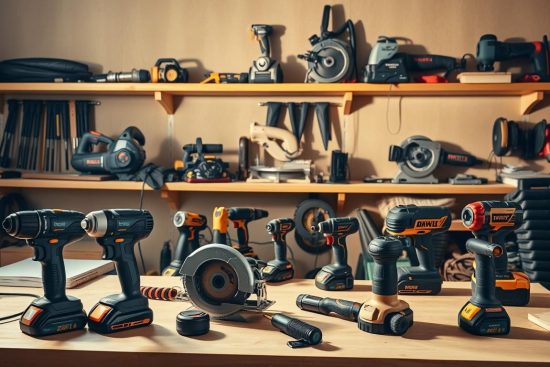
A well-designed central hub can transform how you interact with your home. These multifunctional additions aren’t just about extra counter space—they create seamless transitions between cooking, dining, and socializing. Whether you’re renovating or building from scratch, the right layout balances practicality with visual appeal.
Start by evaluating your room’s dimensions. A spacious area might accommodate seating or built-in appliances, while smaller footprints could benefit from mobile units. Always factor in clearance zones—aim for at least 36 inches around all sides for comfortable movement.
Your budget plays a key role in material choices and features. Prefabricated options offer affordability, whereas custom builds allow tailored solutions like integrated sinks or hidden storage. Don’t forget to consult professionals early about electrical and plumbing needs if adding appliances.
Key Takeaways
- Measure your available area to determine the ideal size and shape
- Prioritize workflow efficiency when positioning appliances or seating
- Explore portable units for flexibility in compact spaces
- Coordinate finishes with existing cabinetry for visual harmony
- Plan utility connections during initial design stages
From breakfast bars to prep stations, these versatile pieces adapt to your lifestyle. By merging smart planning with creative styling, you’ll craft a centerpiece that elevates daily routines and impresses guests.
Overview of Kitchen Islands in Modern Homes
Today’s homes demand flexible solutions that adapt to cooking, entertaining, and daily tasks. Once considered a luxury, these multifunctional units now serve as essential anchors in contemporary layouts. Their evolution reflects shifting lifestyles—prioritizing efficiency without sacrificing style.
Functional Benefits and Versatility
Compact spaces shine with small kitchen islands that add prep surfaces and hidden compartments. Many models include pull-out drawers or shelves, turning unused corners into storage space champions. For tighter areas, mobile versions on wheels allow quick reconfiguration during gatherings or meal prep.
Larger designs often incorporate seating for three to four people, creating instant breakfast nooks. Dual-level countertops keep cooking zones separate from dining areas, while built-in charging stations cater to modern tech needs.
Current Design Trends
Butcher block tops dominate recent renovations, offering warmth and durability for daily chopping tasks. Homeowners mix materials like quartz and concrete for visual contrast, pairing rugged surfaces with sleek cabinetry. Open shelving beneath countertops displays cookbooks or decorative items, blending practicality with personality.
Demand grows for convertible features—think fold-down extensions or retractable outlets. These innovations ensure every inch of counter space works harder, whether you’re rolling dough or hosting a wine night.
Understanding Your Space and Kitchen Layout
Smart design begins with understanding your room’s potential. Whether you’re upgrading or starting fresh, balancing aesthetics and practicality ensures your centerpiece enhances daily routines without disrupting movement.
Measuring Your Kitchen for an Island
Grab a tape measure and graph paper. Map out your room’s width, length, and permanent fixtures like windows or vents. Experts at The Spruce recommend leaving 42 inches between counters for multi-cook households.
Note ceiling height if planning overhead lighting or shelves. For narrow areas, subtract 48 inches from total width to maintain walkways. Always double-check door swings and appliance openings—these details prevent future headaches.
Optimizing Traffic Flow and Appliance Placement
Think like a traffic controller. Position ovens or sinks near existing plumbing to minimize rework. Keep prep zones within arm’s reach of refrigeration, creating a natural workflow triangle that reduces steps.
Materials matter too. Wood surfaces add warmth but require sealing in high-moisture areas. Pair durable quartz counters with slim-profile stools to preserve legroom. Built-in racks or pull-out drawers maximize storage without visual clutter.
Test layouts by walking imaginary paths between key areas. Can you open the dishwasher while someone’s at the sink? Does the microwave door block cabinet access? These trials ensure your design works as hard as you do.
Design Considerations for a Functional Kitchen Island
The true magic of a multipurpose hub lies in balancing form with daily demands. Thoughtful planning ensures every inch serves a purpose while enhancing your space’s visual rhythm.
Must-Have Features for Work and Dining
Built-in sinks streamline meal prep in medium-to-large spaces. Pair them with pull-out trash bins for waste management during chopping marathons. Compact homes benefit from foldable counter extensions that convert snack bars into full dining surfaces.
Consider these essentials:
- Deep drawers for pots and cutting boards
- Adjustable stools that tuck completely under overhangs
- Vertical dividers for baking sheets and trays
Choosing Materials and Finishes
Quartz remains a top choice for busy households—its non-porous surface resists stains from spilled wine or turmeric. For smaller kitchens, butcher block adds warmth without overwhelming sightlines. Pair matte cabinet fronts with glossy counters to create depth.
Mobile units work well in open-concept spaces, letting you rearrange zones for parties or projects. Fixed designs suit homes needing permanent appliance hookups. As shown in functional and stylish designs, mixing metal hardware with natural wood creates timeless appeal.
Exploring Design Options: Styles and Materials for Kitchen Islands
Choosing the right aesthetic for your central workspace blends personal taste with practical needs. Design decisions impact both daily functionality and long-term satisfaction, making material and style choices crucial to your space’s success.

Rustic Versus Modern Approaches
Rustic designs celebrate natural textures with reclaimed wood beams and hammered metal accents. These options often feature farmhouse sinks or open shelving for a lived-in charm. Modern counterparts lean toward sleek quartz surfaces and handle-free cabinetry, prioritizing clean lines over ornamentation.
Color palettes differ dramatically between these styles. Warm earth tones dominate rustic themes, while monochromatic schemes define contemporary spaces. Both approaches can incorporate smart storage options—think hidden charging stations or pull-out spice racks.
Butcher Block, Wood, and Other Surface Options
Butcher block remains a favorite for its durability and timeless appeal. Regular oiling maintains its resistance to knife marks and spills. Pair wood surfaces with metal stools for industrial flair, or woven seats for organic warmth.
Alternative materials offer unique benefits:
- Concrete withstands heavy use but requires sealing
- Quartz resists stains in high-traffic zones
- Recycled glass creates eco-friendly statement pieces
Seating choices elevate both form and function. Backless stools save space in compact areas, while upholstered versions add comfort for extended gatherings. As designer Maria Cortez notes:
“The right surface-stool combination turns meal prep into an experience rather than a chore.”
Balance visual style with real-world needs. A marble-topped beauty might dazzle guests but frustrate with constant maintenance. For busy households, consider hybrid options like wood-edged quartz that merge practicality with panache.
Maximizing Storage and Counter Space with a Kitchen Island
A cleverly planned centerpiece can unlock hidden potential in your room while boosting workflow efficiency. Strategic storage integration paired with smart surface expansion transforms this feature into a multitasking marvel that serves every family member’s needs.
Integrated Storage Solutions
Think beyond basic cabinets. Install vertical plate racks beside dishwashers for quick unloading. Deep, pull-out drawers handle bulky pots better than standard shelves. For narrow areas, slim sliding trays keep spices organized without sacrificing floor space.
| Feature | Benefit | Best For |
|---|---|---|
| Rotating corner units | Access hard-to-reach areas | Small rooms |
| Magnetic knife strips | Free up counter space | Busy cooks |
| Retractable step stools | Reach high shelves safely | Family homes |
Expanding Countertop Areas Efficiently
Maximize your prep zone with tiered levels—keep appliances on lower tiers while reserving the main surface for chopping. Fold-down extensions create instant buffet stations during gatherings. One homeowner shared:
“Adding a 12-inch pull-out shelf beneath our countertop doubled our cookie-decorating area during holidays.”
Mobile butcher block carts offer flexible workspace that tucks away when unused. For permanent solutions, consider waterfall edges that visually expand the area. Match your countertop material to primary work surfaces—this creates harmony while making the room feel larger.
Light-colored quartz reflects light in dim areas, while textured concrete hides crumbs in busy households. As designer Liam Porter advises: “Treat every square inch as prime real estate—if it doesn’t serve two purposes, redesign it.”
Innovative Configurations: Portable, Freestanding, and Island Tables
Modern living spaces thrive on adaptability, making movable and permanent configurations essential for today’s homes. Whether you need extra prep surfaces or casual seating, choosing between rolling carts and anchored units depends on your room’s size and daily routines.
Benefits of Portable and Rolling Carts
Mobile units shine in spaces where flexibility matters most. Locking wheels let you reposition them as a dining station during meals or push them against a wall afterward. Compact designs with foldable side extensions maximize workspace without blocking walkways.
| Feature | Benefit | Best For |
|---|---|---|
| Locking wheels | Easy relocation | Multi-use areas |
| Foldable sides | Expand workspace temporarily | Small footprints |
| Built-in shelves | Store utensils within reach | Compact layouts |
Advantages of Fixed, Non-Movable Designs
Anchored units provide unmatched stability for heavy appliances or frequent use. Built-in cabinets offer deep storage that mobile carts can’t match. One homeowner noted:
“Our permanent unit became the heart of our home—it holds our microwave, holiday dishes, and doubles as a homework station.”
Consider your existing cabinet layout when selecting dimensions. A 36-inch-wide fixed unit fits comfortably beside standard 24-inch base cabinets, leaving 42 inches for traffic flow. Pair with contrasting countertop materials to define zones for dining and food prep.
For narrow rooms, opt for slim profiles with side-mounted racks. Larger spaces can accommodate L-shaped designs with integrated sinks—just ensure your plumbing aligns with the chosen size.
Enhancing Seating and Dining Functionality at the Heart of Your Kitchen
Elevate your home’s gathering spot by blending comfort and practicality. Thoughtful seating arrangements and adaptable surfaces turn meal prep into shared experiences while maintaining efficiency for everyday tasks.
Adding Stools for Casual Seating
Choose backless stools with slim profiles to save space in compact areas. For longer conversations, consider upholstered seats with built-in footrests. Case studies show families use these zones 47% more when seating feels inviting.
- Swivel stools allow easy rotation between cooking and chatting
- Adjustable-height options accommodate kids and adults
- Open shelving beneath seats stores table linens or cookbooks
Match stool finishes to cabinet hardware for visual cohesion. A navy-blue lacquered base pairs beautifully with brass handles on surrounding storage units.
Transforming Your Island into a Dining Hub
Dual-level surfaces create distinct zones—keep place settings on the lower tier while using the main area for food prep. During gatherings, extend countertops with temporary boards that clip onto existing edges.
“We added a 6-inch overhang with hidden outlets. Now our Friday pizza nights seat eight comfortably without tripping over cords.”
Coordinate your surface material with nearby cabinets. A matte countertop complements glossy doors, while wood tones tie together mixed design styles. For time-saving solutions, install pull-out trash bins or charging stations within arm’s reach of seating areas.
Balance aesthetics with your family’s needs. Wipeable fabrics and durable finishes withstand daily use while maintaining their charm for special occasions.
Practical Considerations: Size, Budget, and DIY Projects
Creating a functional workspace starts with smart planning. Balancing spatial needs with financial realities helps craft a solution that lasts. Let’s explore how to maximize value without sacrificing style.

Finding Your Perfect Fit
Measure your floor plan’s open area first. Experts recommend keeping 42 inches around all sides for traffic flow. Compact spaces thrive with narrow units under 30 inches wide—enough room for meal prep without crowding.
Consider these sizing strategies:
- Single-cook zones: 24-36 inches deep
- Multi-purpose areas: 48+ inches with seating
- Mobile carts: 18-24 inches for tight layouts
Smart Solutions for Every Wallet
Prefab units slash costs by 40-60% compared to custom builds. Big-box stores offer butcher block tops with stainless steel bases—ideal for rustic-modern blends. One DIY enthusiast shared:
“We transformed an old dresser into a rolling workspace using salvaged wood. Total cost: $220.”
Try these budget-friendly kitchen island ideas:
- Repurpose furniture with waterproof sealant
- Add locking wheels to stock cabinets
- Install open shelves instead of pricey drawers
Butcher block remains a top choice for its warmth and durability. Pair it with metal legs for industrial flair. Remember: Custom builds suit complex layouts, while modular options adapt as needs change. Always leave room for future upgrades like built-in appliances or charging stations.
Integrating Your Island into the Overall Kitchen Design
Blending your workspace with existing decor creates harmony and boosts functionality. Successful designs mirror surrounding elements through intentional material pairings and spatial relationships. This approach ensures your centerpiece feels purposeful rather than disjointed.
Coordinating with Cabinets, Countertops, and Lighting
Start by aligning finishes. If your cabinets have brass handles, repeat that metallic accent in pendant lights or stool frames. A butcher block cart complements wood-toned floors, while stainless steel surfaces echo modern appliances.
Lighting placement matters. Position fixtures 30-36 inches above countertops to illuminate tasks without glare. For a floating kitchen island look, pair open shelving with recessed ceiling lights. This combo maintains sightlines while adding depth.
Clever storage solutions add storage space without clutter. Install shallow drawers beside ovens for baking sheets. Vertical slots near prep zones keep cutting boards accessible. One designer notes:
“Matching your island’s base color to upper cabinets creates visual continuity, even if counter materials differ.”
Mobility offers flexibility. A rolling butcher block cart serves as extra workspace during holidays but tucks away afterward. For permanent units, extend countertops 12 inches beyond cabinets to kitchen island match existing dining tables.
Finally, balance contrast and cohesion. Dark quartz counters pop against white cabinetry, while matching wood stains unify traditional spaces. These choices ensure your hub enhances daily life while elevating your home’s aesthetic.
Customization and Future Upgrades for Your Kitchen Island
Your home’s heart deserves a centerpiece that evolves with your life. Modern designs now prioritize adaptable features that grow alongside changing needs, whether you’re hosting weekly gatherings or managing busy weeknights.
Tailoring Design Features to Your Needs
Start by identifying your household’s unique rhythm. Families who entertain often might opt for a kitchen island bar with built-in wine coolers. Home chefs could add slide-out spice racks or knife blocks. Modular storage units let you rearrange shelves as your collection of gadgets expands.
Consider these flexible options:
- Adjustable countertop heights for baking or bar seating
- Magnetic panels for displaying recipes or kids’ artwork
- Swap-out cabinet fronts to match seasonal decor
Planning for Upgrades and Long-Term Utility
Choose materials that accommodate future changes. A butcher block surface can later house an induction cooktop. One homeowner shared:
“We left empty conduit pipes during construction—now adding USB ports took 20 minutes!”
| Upgrade | Benefit | Best Time to Install |
|---|---|---|
| Pop-up outlets | Tech-friendly workspace | During electrical updates |
| Drawer dishwashers | Compact cleaning | Plumbing renovations |
| Retractable panels | Hidden appliance storage | Cabinet refacing |
In large kitchen environments, leave space for future seating expansions or appliance integrations. Neutral base colors allow dramatic hardware swaps later. Remember: Smart planning today means your workspace stays relevant for decades.
Conclusion
A well-planned workspace elevates both efficiency and enjoyment, becoming the cornerstone of modern living. By blending meal prep zones with gathering spots, you create a dual-purpose surface that replaces traditional dining table setups. Thoughtful designs add storage through vertical solutions while maintaining an open, inviting atmosphere.
Remember: success lies in balancing proportions, durable materials, and smart configurations. Compact spaces thrive with rolling carts that adapt to daily needs, while larger areas benefit from built-in features. Always align your choices with the existing kitchen layout to ensure seamless traffic flow and visual cohesion.
Don’t hesitate to experiment. A butcher block cart can serve as a casual dining table alternative during brunches. Open shelving beneath counters helps add storage without cluttering sightlines. Whether you choose mobile units or anchored designs, prioritize solutions that reflect your household’s rhythm.
Ultimately, your space should feel like a harmonious blend of style and purpose. With strategic planning and creative touches, even simple rolling carts can transform how you interact with your kitchen layout. Start small, think big, and watch your vision come to life.


